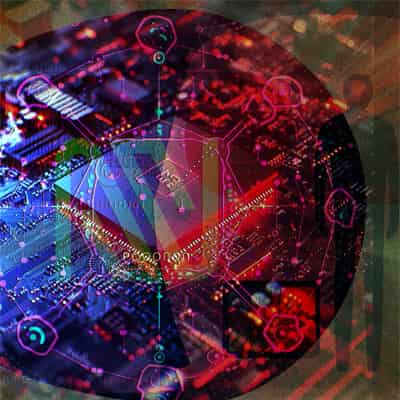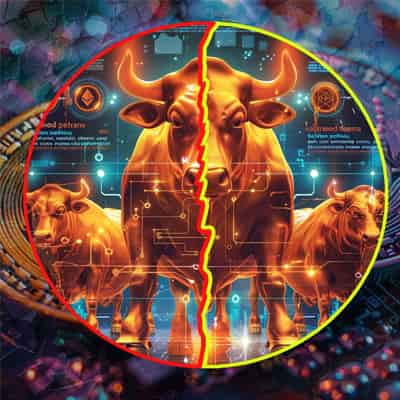Crypto Prediction Markets: The Future of Forecasting?
Oct. 04, 2024.
6 mins. read.
12 Interactions
Decentralized prediction markets, fueled by blockchain technology, are reshaping decision-making and sparking controversy. As US politicians call for bans, will this emerging trend survive the scrutiny?
Decentralized prediction markets are one of the hottest crypto narratives in late 2024, thanks to an increasingly heated US presidential election and its ability as a powerful tool for harnessing collective intelligence and getting gamblers fired up. These platforms allow users to use crypto and bet on the outcomes of future events without intermediaries, using blockchain and smart contracts seamlessly to operate autonomously.
In fact, they’re so popular right now that some US politicians have called for them to be banned as they might sway the election in some way!
How Decentralized Prediction Markets Work
Decentralized prediction markets rely on blockchain technology and smart contracts on chains like Ethereum, Polygon and Solana. The blockchain provides an immutable ledger of all market activities, ensuring transparency and security. Smart contracts, self-executing programs on the blockchain, automate market operations without human intervention.
Tokens on the blockchain serve multiple functions in prediction markets: they act as betting currency, provide liquidity, and in some cases enable governance through voting on protocol changes.
The lifecycle of a prediction market follows a set process:
- Market Creation: A user proposes a new market for a specific event.
- Liquidity Provision: Participants add funds to enable trading.
- Trading Period: Users buy and sell outcome shares.
- Oracle Reporting: When outcome data becomes available, trusted sources feed it into the system.
- Settlement: Smart contracts automatically distribute winnings.
This automated process ensures fairness and eliminates the need for centralized management.
Key Players in the Ecosystem
Several entities need to contribute to the functioning of decentralized prediction markets:
| Market Creators: | Propose and set up new prediction events. |
| Traders: | Buy and sell outcome shares based on their predictions. |
| Liquidity Providers: | Supply funds to markets, earning fees in return. |
| Oracles: | Provide external data to determine market outcomes. |
| Token Holders: | Own platform-specific tokens and participate in governance |
Oracles come in various types to cater to different prediction scenarios. Centralized oracles rely on a single trusted source, while decentralized oracles like Chainlink and Pyth aggregate data from multiple sources. Human-based oracles crowdsource information for subjective outcomes, and machine-based oracles use algorithms and artificial intelligence to collect data on things like stock prices or weather conditions.
What are the Most Popular Crypto Prediction Markets?
Several platforms now fight over market share in the booming decentralized prediction market space. These platforms differ in their underlying technology, market creation processes, fee structures, and reward mechanisms, catering to various user preferences. Here are the most well-known:
- Polymarket
Polymarket is a decentralized prediction market operating on the Polygon network, allowing users to bet on real-world event outcomes using stablecoins. It features a binary outcome model where users buy shares representing the probability of an event occurring, with successful predictions yielding $1 per share. The platform has gained traction, particularly for betting on the U.S. elections, and utilizes smart contracts for secure transactions. Polymarket emphasizes user privacy and accessibility by eliminating KYC requirements.
- Drift Protocol
Drift Protocol has launched a prediction market feature called B.E.T on the Solana blockchain, enabling users to bet on real-world events like elections. This platform distinguishes itself by allowing trades in over 30 tokens, including yield-generating assets, rather than just USDC. Users can earn yield on their positions and create hedged bets, enhancing capital efficiency. The feature could attract significant liquidity and participation in the near future.
- Augur
An Ethereum-based platform that enables user-created markets, Augur features low fees and allows market creators to earn from trading activity.
- TotemFi
Utilizes a unique staking system where users don’t lose funds on incorrect predictions. It offers rewards in Bitcoin and its native TOTM token.
- Hedgehog Markets
Built on Solana, Hedgehog Markets offers both peer-to-peer and automated market maker (AMM) functionality. It allows users to stake predictions and earn passive yield.
Advantages and Challenges of Blockchain Prediction Markets
Decentralized prediction markets have several key advantages over traditional counterparts.
Their distributed nature makes them resistant to censorship and difficult to shut down or control. They provide global accessibility, allowing anyone with internet access to participate regardless of location.
The absence of intermediaries leads to reduced fees and increased cost-efficiency. Their 24/7 operation and global participation can cause deeper liquidity. The blockchain’s inherent transparency ensures all market activities are recorded and auditable, while the immutability of placed bets enhances trust in the system.
However, these markets also face significant challenges.
- Regulatory uncertainty looms large, with many jurisdictions having unclear or unfavorable regulations.
- Ensuring accurate and timely real-world data remains a challenge. Some markets resolve in an ambiguous way: an example being the recent Venezuelan election, whose outcome was disputed. The potential that wealthy users could corrupt decentralized oracles is a concern.
- The technical complexity of these platforms may deter adoption, and blockchain limitations can lead to high fees during peak usage
Addressing these challenges is crucial for the long-term viability and growth of decentralized prediction markets.
How Can Prediction Markets Be Applied in the Real World?
Decentralized prediction markets find applications across various domains, including financial forecasting, political predictions, sports betting, corporate decision-making, health predictions, and technology adoption forecasting. As these markets evolve, we can expect to see even more diverse and specialized use cases emerge.
However, it is already forcing innovation in traditional platforms, causing some centralized platforms to adopt more open practices in response, and to lower their fees to compete.
Moreover, decentralized prediction markets are contributing to overall market efficiency:
- Enhanced Liquidity: Global participation increases available trading funds.
- Improved Price Discovery: Aggregated insights lead to more accurate predictions.
- Fast Information Integration: Prices update rapidly in response to new information.
- Reduced Manipulation: Decentralized nature makes it harder for individuals to sway markets.

What’s the Future of Crypto Prediction Markets?
The future of decentralized prediction markets looks promising, with several trends on the horizon:
- Technological Advancements: Improvements in blockchain scalability and smart contract functionality will enhance market performance.
- AI and Machine Learning Integration: Advanced algorithms will help users make more informed predictions.
- Cross-Chain Interoperability: Markets will operate across multiple blockchains, increasing liquidity and user base.
- Regulatory Clarity: As the space matures, clearer regulations will likely emerge, potentially leading to wider adoption.
- Integration with DeFi Ecosystem: Prediction markets will increasingly interact with other decentralized finance tools, creating new financial products and services.
Conclusion
Decentralized prediction markets are a significant evolution in forecasting and decision-making, and are reshaping the way markets operate. By leveraging blockchain technology and collective intelligence, these platforms offer a more transparent, accessible, and efficient way to predict future outcomes.
As they continue to develop and overcome their current challenges, decentralized prediction markets have the potential to revolutionize how we approach forecasting across various industries and domains. Their growth and integration with other emerging technologies will play a role in shaping the future of finance, governance, and decision-making.
Let us know your thoughts! Sign up for a Mindplex account now, join our Telegram, or follow us on Twitter.


.png)

.png)


.png)







0 Comments
0 thoughts on “Crypto Prediction Markets: The Future of Forecasting?”